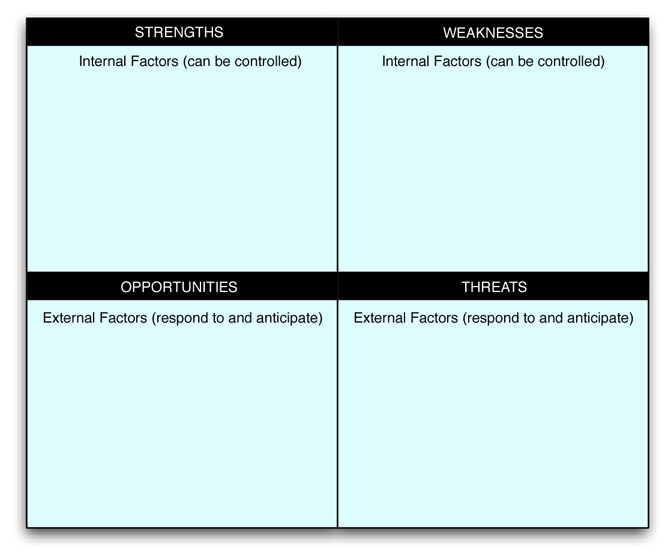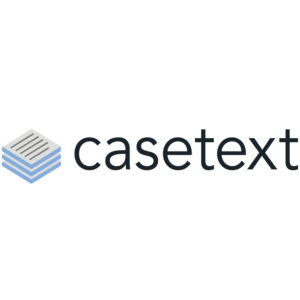I was walking around a shopping center in early November and there were already Christmas decorations hung up everywhere. Thanksgiving seems like it has almost been completely subsumed by the winter holiday season. Which is unsurprising really. Thanksgiving is, well, about giving thanks. Spending time with family and friends. Eating dry turkey, listening to bickering relatives, then falling asleep on the couch watching the Lions lose this year.
On the other hand, Christmas, Chanukah, Festivus, etc, despite their other origins and intent, have morphed into a celebration of frenzied consumerism. There is still time with family and friends, but because companies and retailers rely on the holiday season for nearly 20% of their total sales, they have an incentive to extend and promote shopping over thankfulness.
Retailers spend months, if not all year, planning their holiday promotions. Because they know that the holiday season is such a big part of their revenue, they expend resources and energy to bring customers into stores and maximize sales. They track, record, and catalog everything that happens. Then after every holiday sales season, they go back in and analyze the data they have captured and begin planning for the new year.
For a variety of reasons, lawyers and law firms have not been the best about tracking the flow of business inside their firms or planning for the new year. Okay, that’s being generous.
As a whole, lawyers are horrible at understanding how their practice functions. They make no efforts to capture data, build knowledge bases, or track client acquisition and billing. Lawyers generally don’t know where their time is spent or where work comes from. Nor do they spend much setting goals or making plans for business growth and client acquisition.
Not only do most lawyers not understand the hard financial and billable aspects of practice, most pay little more than lip service to the soft parts of their practice: culture, process improvement, developing relationships. Professional development might not pay the bills, but it sustains and amplifies the ability to do so.
Whether you are a solo lawyer who has hung their shingle, a wet-behind-the-ears associate, or a partner at a law firm, you need to take the time to understand how your practice works and why. There is likely no better time to do so than at the end of the year. Business slows down and there is ample time to reflect on the past year and get ready for the new one.
While the end of the year is a good six weeks away, now is the time to prepare before you begin your annual planning.
If you are going to do a thorough job of understanding what worked and what did not in the past year, then you’re going to have to spend some time collecting information (if you haven’t done so already). This can take time if you don’t already have a system in place to capture this information. You might not even know what you need to look for. That’s why you need to start now, so that you can be prepared when you sit down to take stock of your performance.
As many lawyers are unfamiliar with annual planning or generally don’t know where to start, below is a reference guide and template on Annual Planning For Lawyers.
Contents
Before You Begin
This is not an article to be read, this is an assignment to complete.
If you’re merely going to read the article without taking action, just stop reading now and save yourself the time. The purpose of Annual Planning is not to think about it, but to actually do it.
Breaking down and understanding the how and why of your practice, then setting goals for yourself in the New Year and developing plans to achieve them.
As Benjamin Franklin said many years ago, “If you fail to plan, you are planning to fail!”
Looking At The Big Picture
The first step is look at things from the macro level. It’s helps to step back and think about some broad questions before diving into the minutiae. Set aside some time to ponder the following questions, but not too much time. Just try and answer from a gut level.
Some things to consider:
- Where does your business come from?
- If you’re a solo, which marketing efforts have worked?
- If you’re an associate, which partners have assigned you work?
- If you’re a partner, which client relationships have generated the most significant amounts of work?
- Where has your business increased/decreased?
- Has the flow of business from a client decreased? Have you met with the client discussed why?
- Is the business going to another firm? Why? What do you need to do to get the business back?
- Where do you (or the firm) spend money?
- Paid marketing efforts?
- Conferences?
- Expense items?
- Continuing education?
- Who have you referred (or assigned) work to?
- Are you spreading referrals (assignments) around to multiple lawyers, or do you send all work to one person?
- Who has referred work to you?
- Are there particular lawyers or other professionals who regularly send you work?
- Are you utilizing a referral service?
- What are your largest ongoing cases/matters?
- Are you up-to-date with all the moving parts?
- When was the last time you did a full file review?
- What were your largest cases/matters that ended this year?
- What was your projected outcome? What actually happened?
Conducting An Initial SWOT Analysis
A SWOT analysis is a strategic planning method used to evaluate the Strengths, Weaknesses, Opportunities, and Threats involved in a project or business venture. It involves setting an objective and identifying the internal and external factors that are favorable and unfavorable to achieve that objective. Essentially, a SWOT analysis is a subjective assessment of data which is organized by the SWOT format into a logical order that helps understanding, presentation, discussion and decision-making.
Again, this is a macro scale view of your upcoming year. After answering the questions about your Big Picture, you should have enough of a foundation to set some general goals and objectives. Once you have, start identifying and listing factors that could affect them positively or negatively.
Move from quadrant to quadrant, asking yourself honest questions about each section. Below are a few questions for each section to help you get started. These are not exhaustive sets of questions. Instead, they should help you formulate your own questions. Only you know and understand your practice.
Strengths
|
Weaknesses
|
Opportunities
|
Threats
|
Collecting, Capturing, and Understanding Data
At this point, you should have an inclination of how you think you did this past year and a general idea of what you want to achieve in the following year. This is where many people tell themselves “good job,” and then move on.
But all you have right now is how you think you did. What you feel went well and what did not. But you don’t empirically know what worked and what didn’t this past year. Right now all you have is instinct and gut feelings. What you need is hard, factual data.
One of the best things you can do for your practice is tracking data about your practice:
- How clients chose your firm.
- The amount of billable hours on a matter.
- The breakdown of those billable hours into discrete categories.
- The number of matters a client refers to you on an annual basis.
There is no end to the data you could collect. If you’re not already capturing data, this is where annual planning is going to become labor intensive – but don’t quit! If you’re serious about improving your practice, then you have to actually understand your practice. Capturing data for review and analysis is one of the best ways to do this.
Law practices generate volumes of information and data. Taking the time to sift through it all can be difficult if you have to do it manually, but luckily there are many software solutions that can help automate the process. Many firms have adopted solutions such as Aderant, Clio, MyCase, PracticePanther, RocketMatter, and more. But if you don’t have a practice management system, you can also catalog data by hand with a notepad or spreadsheet.
The following categories and measurements are a starting point for you to begin collecting data about your practice. Again, as practices vary wildly, so will metrics vary among practices. When reviewing your files, look for regularly recurring items and see if it is something you can track across clients or matters.
Fees
- Average Fee Per Client: Fee revenue for the year divided by the number of clients billed during the year.
- Average Fee Per Matter: Fee revenue for the year divided by the number of clients billed during the year.
- Total Matters Per Client: Number of matters you received from a client.
- Total Fees Per Client: Total fee revenue per client.
- Billable Hours Breakdown Per Matter (Litigation): If you’ve been tracking your hours correctly, you can begin to understand how much time you put into each area: communications, discovery, research, hearings, etc. Useful for preparing accurate proposed litigation plans & budgets.
Client Acquisition
There is a growing number of software platforms that focus on the data behind acquiring new clients as well. Lexicata (acquired by Clio) and Lawmatics can help you make sense of where your clients are coming from. But even if you don’t use software to track new client acquisition, you can easily make a general list by reviewing case files and breaking down new clients into the following categories.
- Referral from other attorneys
- Internet sources (website/blog/social media)
- Referral from area businesses
- Speaking engagement
- Writing/Publications
- Business cards/Networking events
- Existing relationships
- Advertising
Expenses
Review your books and find out where your money goes.
- Lease
- Administrative Costs
- Office Materials
- Insurance
- Average Costs per Client/Matter
Net Promoter Score
A Net Promoter Score is a way to measure client loyalty. It was introduced by Fred Reichheld in 2003 in the Harvard Business Review as an improvement on the traditional customer-satisfaction survey. Lawyerist as a good post on applying this concept to law practices. (Although a growing number of research studies suggest that NPS is not a valuable metric.)
A brief note on Key Performance Indicators (KPI)
What You Thought You Knew v. What You Actually Know
Now that you’ve taken the time to go through your case files, records, and books, you should now have a real idea of how you get clients, where business comes from, how you spend money, and more. Take this empirical data, go back and compare it to your “gut feeling” answers from the Big Picture section at the very beginning. Do they match up? Where do they conflict? How does the data match up to your SWOT Analysis? Was it an accurate assessment?
Comparing your gut level feelings to the actual hard numbers usually provides insights into gaps you might not be aware of. Where you thought you were getting the most referrals is actually somewhere else. Your most expensive matters came from an unexpected client. You’re spending way too much money on insurance.
Now it’s time to combine all this information and formulate a plan, so that you can eventually end up somewhere like this:
Annual Planning For Lawyers
The primary consideration you need to keep in mind when formulating your annual plan is decide what you are actually trying to achieve and always keep this in mind. Once you get into planning, it can easy to be led astray by ancillary matters. Instead focus on one or two main goals and build your plan around them. These could be goals such as:
- Generate 35% more new clients this year
- Increase Average Fee Per Matter by 5%
- Decrease administrative costs by 10%
Once you have your goals firm in your mind, it’s time to create your plan. At this point you’ve done the preparation necessary to understand how your practice performed in the past year, and the changes you will need to make in order to achieve your goals in this New Year. Annual plans for lawyers can vary, but most will at least have these three components:
- Marketing Plan
- Financial Plan
- Professional Improvement Plan
When developing each of these components, you need to be S.M.A.R.T. That is, your objectives and goals need to be:
- Specific – target a specific area for improvement.
- Measurable – quantify or at least suggest an indicator of progress.
- Assignable – specify who will do it.
- Realistic – state what results can realistically be achieved, given available resources.
- Time-related – specify when the result(s) can be achieved.
What follows is a brief overview of developing each of the components of your annual plan.
Marketing Plan
Marketing often gets a bad rap from lawyers. It’s a dirty word that conjures up images of sleazy ambulance chasers. But it doesn’t have to be. Marketing is really just communicating the value of your professional services. This can be done through speaking or writing. Or it could be done with highway billboards. The focus of your marketing will depend on your practice and clients. But almost any marketing plan you develop should include these four categories:
- Ideal client profiles – Now you should have an idea of the clients you personally favor, as well as the clients that generate ideal revenue. Using this, envision your ideal future clients. You should be able to generate a few different profiles based on practice areas. How are you going to reach them?
- Marketing Message – What do you want to display? Your reputation, your experience, your training (including certifications & associations), your firm, your conduct? Etc.
- Marketing Medium – What worked last year that you should focus on more? What had little returns and should be abandoned? You need to identify the 4-6 most effective strategies that work for your practice. These will be your marketing mediums.
- Marketing Budget – Once you identify the mediums you want to use to market your practice, create a budget. How much will each activity cost? How often will you do it? Create a marketing budget for the year.
If you want to get detailed on your marketing plan, you should download the free 36 page workbook from Carolyn Elefant at MyShingle.
Financial Plan
Start by looking over the financials you collected earlier and analyze your income. Which matters/clients generated the most income? When did it come in? Based on your caseload and business generation, what do you project to bring in next year? Making income projections is simply making your best guess, using the best information you have at hand. Project your income by quarter.
Now analyze where you spent money this past year. What do you need to spend more or less on in the coming year? Based on your marketing plan and your history, create a budget by quarter for the coming year. Now you have a budget that you can measure each quarter’s performance to. After you do this one time, it will become much easier and much more reliable year after year.
Professional Improvement Plan
Your professional development is not anyone’s responsibility other than yours. Only you can take control of your career and development, no one can do it for you. The most important thing to do is perform an honest self-assessment. If you’ve never completed on before, you can look for templates online and you will find plenty (or start with examples from NYC Bar, Yale Law, or Georgetown Law). Generally speaking, you will need to rate yourself in categories such as: work habits, business planning (if you’re reading this, you’re doing good!), management skills, client relationships, legal education, and professional relationships.
Now take this information and look back at your year regarding each category. Does your self-assessment actually match up with how you performed? What are the discrepancies? What could you improve? Set (S.M.A.R.T.) goals for yourself in the coming year.
Plans Are Nothing; Planning Is Everything
If you’ve never conducted an annual plan before, this should give you all the tools you need to get started. And if you have conducted an annual plan, hopefully you found a new tool for your toolbelt.
But as Field Marshall Helmuth von Moltke observed in the 19th century (paraphrased):
No plan survives contact with the enemy.
In regards to annual planning for lawyers, the enemy is life.
It’s a busy caseload, inter-office politics, the economy. Difficult opposing counsel, exasperating clients, and overwhelming family obligations. It is unlikely that you will be able to stick exactly to the the plan you make for this next year. But taking the time for planning will put you in a far better position than not. At least you will have a guidepost for the year, a way-point for you to aim towards. A self-defined goal you can use to push yourself forwards.
The alternative is to listlessly bounce around from moment to moment. Always reacting to situations rather than anticipating them and taking control.
You are about to start a New Year – in your practice, in your firm, in your life.
Make the decision to take control.
P.S. – One of the best things you can do to set yourself up for success is to have a community of people to help and support you. The best online lawyer community happens to be behind the button below.
















